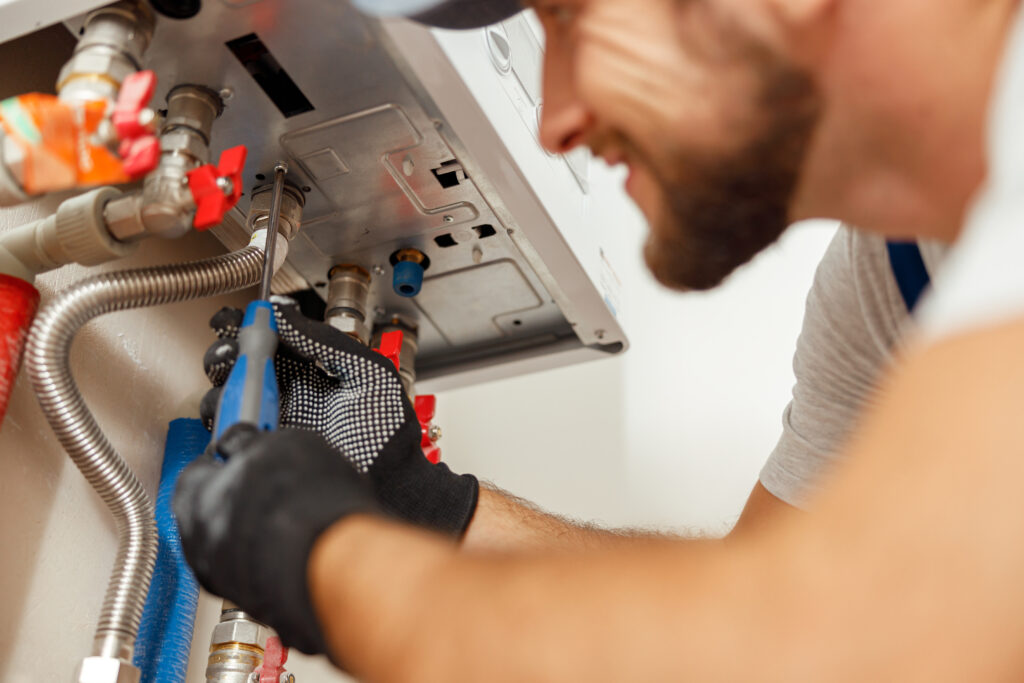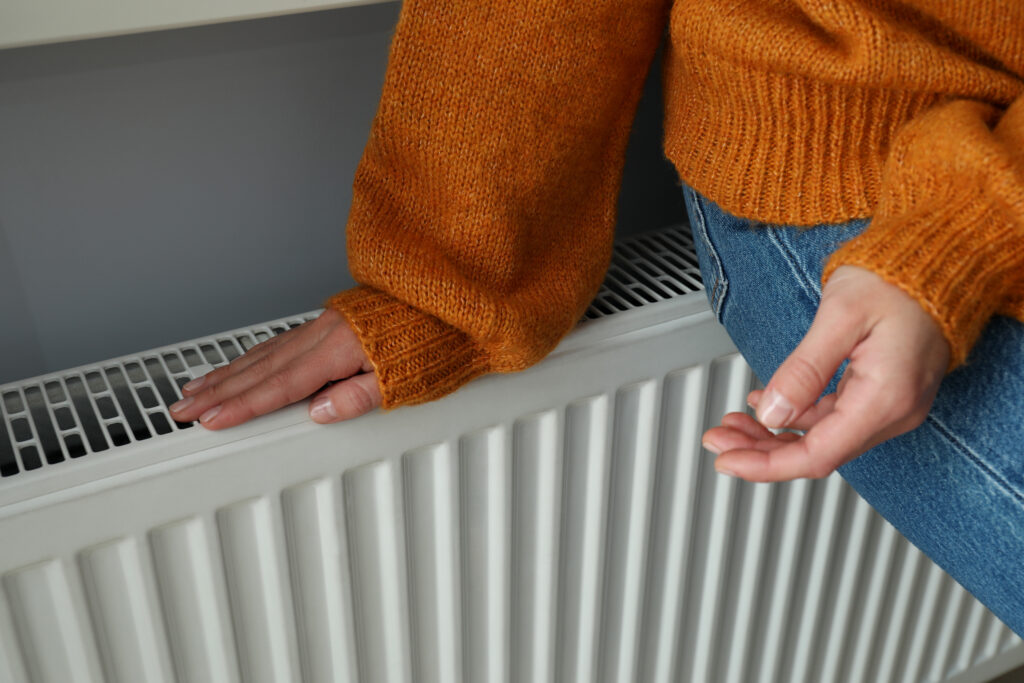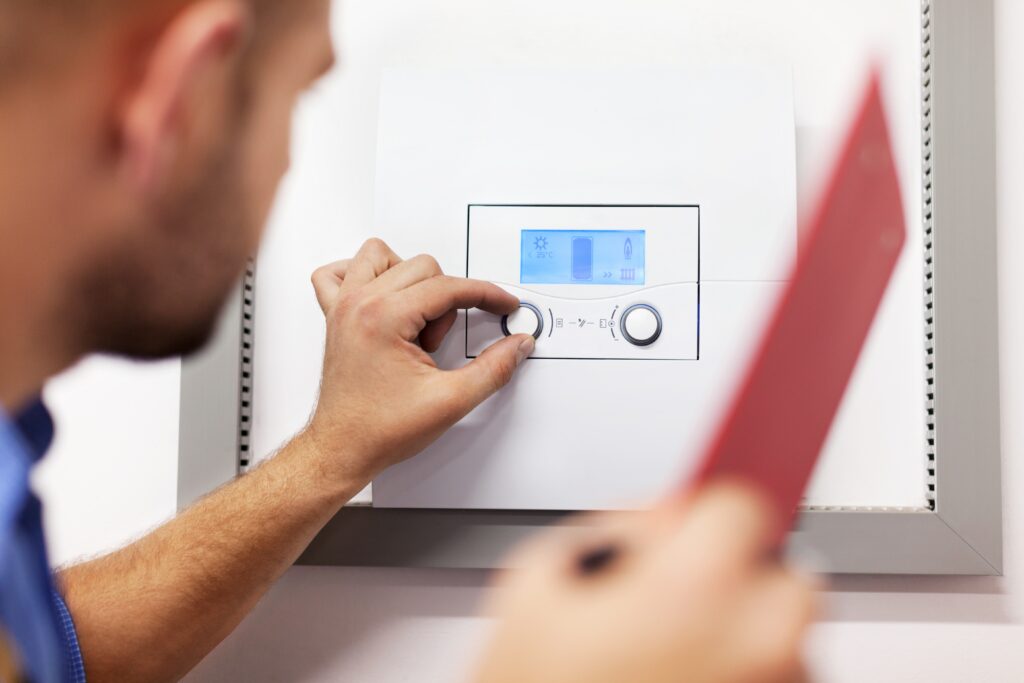Servicing A Boiler Tips
Boiler servicing is an essential aspect of home maintenance, crucial for ensuring the safety, efficiency, and longevity of your boiler. Regular servicing can prevent breakdowns, save money on energy bills, and keep your home warm and comfortable. This comprehensive guide outlines a ten-step process for servicing a boiler, detailing each step involved in this crucial task.
Step 1: Initial Safety Checks
Before starting any work on the boiler, it’s important to ensure the area is safe. This includes checking for any gas leaks and ensuring that the boiler is turned off. Safety should always be the priority, and these initial checks are crucial for preventing accidents.
Step 2: Inspection of External Components
The second step involves a thorough inspection of the boiler’s external components. This includes checking the general condition of the boiler, looking for any signs of corrosion or damage, and ensuring that all controls and displays are working correctly. Any physical damage could be a sign of internal problems and should be investigated further.
Step 3: Removing the Boiler Casing
Carefully remove the boiler casing to access internal components. It’s important to do this gently to avoid damaging any parts. This step allows for a detailed inspection of the internal components of the boiler.
Step 4: Checking the Burner and Heat Exchanger
The burner and heat exchanger are critical components of the boiler. Inspect them for any signs of soot or debris, which could indicate incomplete combustion – a common cause of inefficiency and potential safety risks.
Step 5: Inspecting the Flue and Combustion Releases
Checking the flue system is vital for ensuring harmful gases are being safely expelled from the boiler. Inspect the flue internally and externally for any obstructions, damage, or leaks. A properly functioning flue is essential for the safe operation of the boiler.
Step 6: Checking Safety Devices
Every boiler is equipped with various safety devices, such as pressure relief valves and thermostats. Test these devices to ensure they are working correctly. These safety features are crucial for preventing dangerous situations like boiler overpressure.
Step 7: Inspecting and Cleaning the Condensate Trap and Pipe
The condensate trap and pipe play a key role in modern condensing boilers. They should be inspected and cleaned to ensure they are not clogged. A clogged condensate trap can lead to boiler malfunctions and inefficiency.

Step 8: Checking Seals and Pipework
Inspect all seals and pipework for signs of wear and tear or leaks. Even small leaks can lead to a loss of efficiency and potential damage to the boiler and surrounding area.
Step 9: Testing Boiler Functions
After inspecting and cleaning the key components, the next step is to test the boiler’s functions. This involves turning the boiler on and monitoring its operation. Pay attention to the ignition process – it should be smooth without any unusual noises. Check the boiler responds correctly to thermostat controls, heats up efficiently, and the pressure levels are stable. This functional testing is crucial to confirm that all parts are working in harmony and the boiler is operating efficiently.
Step 10: Final Checks and Reassembly
To conclude the boiler service, perform a final check of all components and ensure everything is in place. Clean any debris or dust that might have accumulated during the service. Carefully reassemble the boiler casing, ensuring that it fits correctly and securely. It’s important that the casing is properly reattached to maintain the safe operation of the boiler.
Additional Maintenance Tips
In addition to annual servicing, it’s wise to regularly monitor your boiler for any signs of issues. This includes listening for unusual noises, checking for warning lights or error messages on the display, and monitoring the water pressure. Immediate attention to any abnormalities can prevent more significant problems down the line.
Importance of Professional Servicing
While some basic maintenance tasks can be performed by homeowners, a professional service is essential for a comprehensive check. A Gas Safe registered engineer has the expertise and equipment to thoroughly service your boiler, ensuring it’s safe and running efficiently. DIY servicing is not recommended and can be dangerous, as well as potentially invalidating your boiler’s warranty.
Understanding Your Boiler’s Needs
Different types of boilers, such as combi, system, or conventional boilers, may have different servicing requirements. It’s important to understand the specific needs of your boiler type and ensure that the service covers all necessary checks and tasks.
Staying Informed and Prepared
Keeping yourself informed about your boiler, including understanding its basic operation, maintenance requirements, and knowing where to find the user manual, can be invaluable. Being prepared also means scheduling annual services well in advance and not waiting until you suspect an issue.
Environmental Considerations
Consider incorporating eco-friendly practices in your boiler maintenance. This can include optimising your boiler settings for efficiency, using energy-saving modes, and ensuring your home is well insulated to reduce unnecessary heating demand.
Future-Proofing Your Heating
As energy efficiency standards and technologies evolve, it’s wise to stay abreast of changes and advancements. Future-proofing your heating might involve considering upgrades or replacements in line with more sustainable and efficient heating solutions.
Thanks For Reading Todays Blog
Servicing a boiler is a comprehensive process that plays a critical role in the safety, efficiency, and longevity of your heating system. By following these ten steps and ensuring regular professional servicing, you can maintain an efficient and reliable boiler, providing peace of mind and comfort in your home. Regular maintenance not only ensures the safe operation of your boiler but also contributes to energy efficiency, potentially reducing heating costs and helping the environment. Remember, taking care of your boiler is an investment in your home’s warmth and safety.
FAQ’s
How to Service a Back Boiler?
Servicing a back boiler involves inspecting the burner, heat exchanger, and flue to ensure safe and efficient operation. It’s best to have a Gas Safe engineer perform this check, as back boilers require specialised servicing to meet safety standards.
What tools are needed to service a boiler?
Essential tools include a manometer, flue gas analyser, and a boiler brush. These help test pressure, check emissions, and clean parts.
How often should a boiler be serviced?
Boilers should be serviced annually to maintain efficiency and safety.
What is a boiler flue, and why check it?
The flue vents gases outside; regular checks ensure there are no leaks or blockages.
Why is checking boiler seals important?
Seals prevent gas leaks. Regular inspection helps detect wear and tear early, maintaining safe operation.
Call on the Professional Services of Heat-Tec
Whether you are looking for plumbing or heating engineers or a company that carries out gas safety inspections, you have found the right company. Heat-Tec offers a professional approach to plumbing, striving to achieve the highest possible standards from the start to the finish of any project. No job is complete until you are satisfied, contact us today.






